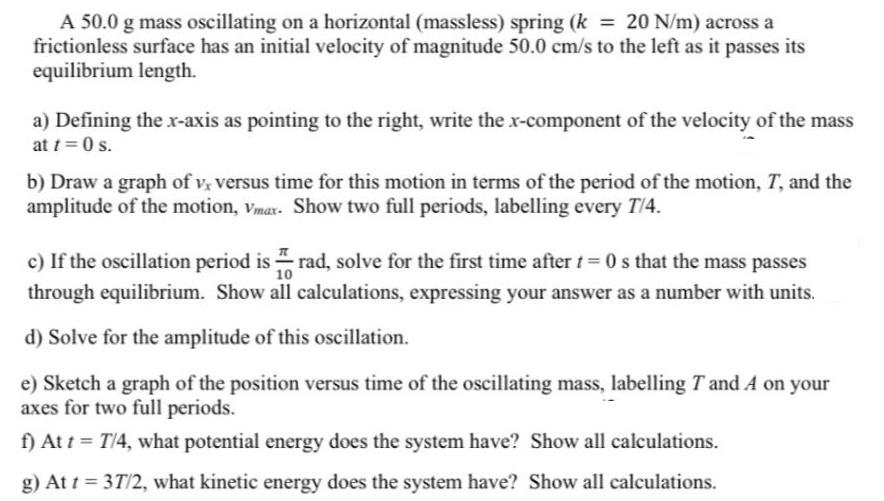Answered step by step
Verified Expert Solution
Question
1 Approved Answer
A 50.0 g mass oscillating on a horizontal (massless) spring (k = 20 N/m) across a frictionless surface has an initial velocity of magnitude

A 50.0 g mass oscillating on a horizontal (massless) spring (k = 20 N/m) across a frictionless surface has an initial velocity of magnitude 50.0 cm/s to the left as it passes its equilibrium length. a) Defining the x-axis as pointing to the right, write the x-component of the velocity of the mass at t = 0 s. b) Draw a graph of v, versus time for this motion in terms of the period of the motion, T, and the amplitude of the motion, Vmax. Show two full periods, labelling every T/4. c) If the oscillation period israd, solve for the first time after t=0 s that the mass passes through equilibrium. Show all calculations, expressing your answer as a number with units. d) Solve for the amplitude of this oscillation. e) Sketch a graph of the position versus time of the oscillating mass, labelling T and A on your axes for two full periods. f) At t = T/4, what potential energy does the system have? Show all calculations. g) At t = 37/2, what kinetic energy does the system have? Show all calculations.
Step by Step Solution
There are 3 Steps involved in it
Step: 1
a At 0t0 s the 1component of the velocity vx is 500 cms to the left b Unfortunately I canno...
Get Instant Access to Expert-Tailored Solutions
See step-by-step solutions with expert insights and AI powered tools for academic success
Step: 2

Step: 3

Ace Your Homework with AI
Get the answers you need in no time with our AI-driven, step-by-step assistance
Get Started


